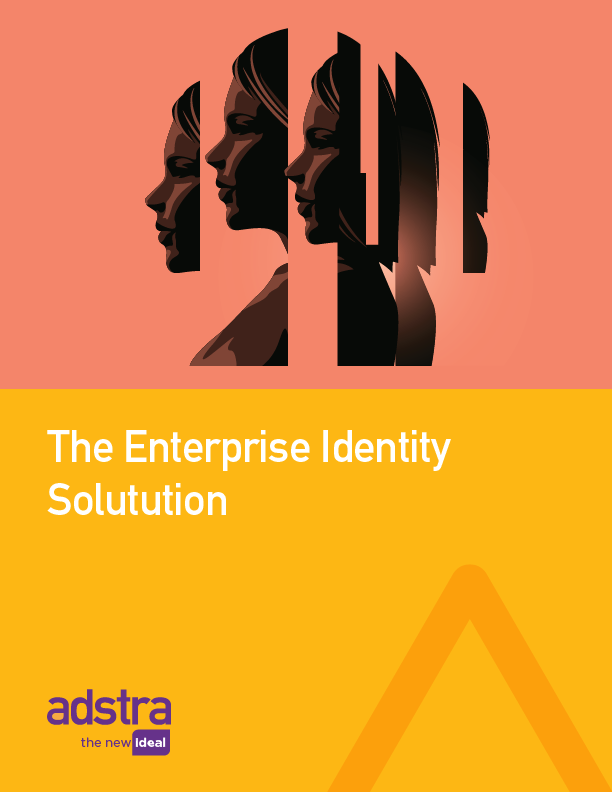MAGIC, MYTHS, AND HYPE CYCLES: 2020 HAS NO SHORTAGE OF FALSE PROMISE
The 2020s are going to be different. Facing the deprecation of cookies and IDFAs, and a new era of privacy regulation, marketers are being thrust into a new era defined by first-party data and identity. By extension, that means this new era that requires a new paradigm for data portability of between online and offline, known and unknown channels – one that maximizes security and minimizes the risks. Marketers need a way to orchestrate any form of data or identity to any endpoint, all while protecting user privacy and ensuring the proper handling of their information. They need solutions that are people-based and privacy-first, agile and extensible, cost-efficient and value-based.
Finding that solution requires rethinking the business of data from the ground up, with first-party data and identity at the center. It requires that marketers navigate a complicated landscape of offerings with a sober view of what will drive better results. Marketers face no shortage of options when it comes to the technology and services they will rely on to solve for data and identity in the coming decade. They should keep a few things in mind as they set about selecting the right partners for the journey.
The Promise of CDPs
Just by their name, you’d think Customer Data Platforms would be the panacea of data and identity. But the CDP space is just as confusing as it is ubiquitous. Over 100 companies now classify themselves as CDPs, but the fact is that most are point solutions that were built with a narrowly defined set of features. The vast majority of CDPs assume that their clients bring identity that’s already been resolved externally as a platform input. Most (but not all) CDPs were built to effectively organize, store, and deliver individual data, but the deeper work of resolving identities is left to the marketer or, more likely, to another vendor. If the data you put into your CDP is flawed…again: garbage in, garbage out.
The Allure of Match Rates
Marketers look to match rates as the primary metric for measuring the effectiveness of identity resolution, a proxy for addressability itself. Many identity resolution providers tout higher match rates as proof that their technology is having an impact.
Match rates are only one part of the picture, and they mean virtually nothing when taken out of context. The match rate doesn’t tell you the quality of the data that was being matched, the security and efficiency of the matching process, let alone provide any insight into how to effectively deploy an identity after its matching.
It’s easy to understand why marketers would opt for a simple metric to demystify what is an inherently difficult problem in identity resolution. But marketers also risk placing too much equity in the value of a match rate when the ROI that derives from a match depends on countless other factors.
The Myth of “Deterministic”
Not all data points start out clean and indisputable. Those companies that play in the ‘deterministic’ data space claim that deterministic data holds the answer because it arrives clean out the gate. That’s an overly simplistic view, and potentially dangerous to marketers.
The fact is, deterministic observations can be collected but may have no value, or even negative value. A site visitor with a cookie tied directly to the email no@no.com is technically deterministic data, but it has no value. is a deterministic data with no value. Buying ad impressions against that cookie due to a “deterministic” match can be a direct waste of ad dollars. Garbage in, garbage out.
Alternatively, many observations, events, and linkages are not deterministic but can be incredibly high value if you see repeated observations of the same data points over time. Marketers can develop confidence levels based on these specific, repeated observations. Maintaining a probabilistic approach with varying levels of confidence is better suited to activities such as prospecting. In other words: deterministic data is not a panacea.
The Solution: Don’t Send Your Data Out
But what if marketers didn’t have to release any PII data to build a persistent identity? What if everything stayed in their environment, safely behind your firewall? Risks diminish, speed to execute increases, complexity drops. The trouble is, almost every data and identity solution lives as an external system.
Adstra is different. As the industry’s first Data Bureau, Adstra offers our clients the opportunity to leverage our modular data assets and identity resolution capabilities safely behind a client’s firewall. There’s no PII to send. Contracting is quick and simple, clients maintain full control of the data and full transparency into its applications. Even the matching can be conducted in the client’s environment.
Adstra provides both the software and the hands-on service to prepare the data for optimal matching in processes kept entirely behind the marketer’s firewall, under their complete control and supervision.
Adstra can ingest any form of identity (individual or household), assign a persistent ID connected to attributes data, and action against any other media or form of identity. It works independently of a brand’s choice in technology and enables brands to meet privacy regulations by linking its data back to validated individuals or customers. A Data Bureau is compatible with CDPs, DMPs, onboarders, and marketing clouds, facilitating privacy-compliant portability of critical data and intelligence between these different systems. Importantly, the Adstra Data Bureau combines predictable cost structures with guidance from expert industry veterans, freeing the marketer to explore incremental applications of data without the burden of incremental costs.
Curt Blattner | VP Channel Partners at Adstra




